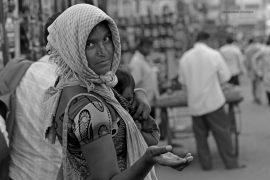On a hot, dry afternoon at Ralegan Siddhi in India’s western state of Maharashtra, Ansar Shaikh climbed effortlessly to a hill top and pointed at the vast expanse of farmland all around.
A local guide, Shaikh uses the summit as a viewing gallery to showcase not the village’s idyllic setting, but the trenches and stone barriers on the hill’s slopes, and earthen dams on the ground to trap each raindrop that falls.
This tiny village – with a population of 2,500 and spread over 900 hectares (2,224 acres) – is located in Ahmednagar district, where the average annual rainfall is about 500 mm (19.7 inches), the lowest among all districts of Maharashtra, according to weather officials.
But Ralegan Siddhi has remained water sufficient for four decades, even in the severe droughts of 2014 and 2015 that triggered nearly 7,000 farmer suicides in Maharashtra – the highest in the country – over crop failure and mounting debts.
Copyright©Madras Courier, All Rights Reserved. You may share using our article tools. Please don't cut articles from madrascourier.com and redistribute by email, post to the web, mobile phone or social media.Please send in your feed back and comments to editor@madrascourier.com





